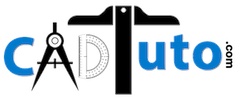Brief Answer: To draw an angled line in AutoCAD, you can use the “Line” command with specific angle and length inputs or utilize object snap and polar tracking features.
Detailed Explanation and Solutions:
- Understanding the Challenge:
- Drawing a line at a specific angle in AutoCAD requires precision.
- The angle is typically measured from the horizontal (X-axis) in a counter-clockwise direction.
- Using Line Command with Angle Input:
- Activate Line Command: Type
LINEorLin the command line, then press Enter. - Specify Starting Point: Click in the drawing area or enter coordinates for the start point.
- Enter Angle and Length: Type the length followed by the angle in brackets. For example,
50<30(which means a 50-unit long line at a 30-degree angle). - Complete the Line: Press Enter to complete the line.
- Activate Line Command: Type
- Using Object Snap and Polar Tracking:
- Enable Object Snap and Polar Tracking: Make sure these are enabled in the status bar for precision.
- Start Line Command: Type
LINEand press Enter. - Set Starting Point: Click or type coordinates for the first point.
- Use Polar Tracking: As you draw the line, polar tracking will help you align the line at specific angles. Click to set the end point.
- Using Relative Coordinate Method:
- Start Line Command: Enter
LINEand press Enter. - Specify Starting Point: Choose the start point.
- Enter Relative Coordinates: For an angled line, use relative polar coordinates. For instance, type
@length<angle(like@100<45).
- Start Line Command: Enter
Key Points:
- Correct Angle Measurement: Remember that angles in AutoCAD are measured from the X-axis in a counter-clockwise direction.
- Use of Tools: Utilize AutoCAD’s polar tracking for visual guidance on angles.
- Practice for Precision: Familiarize yourself with entering angles and lengths for quick and accurate line creation.
These methods provide different ways to draw lines at specific angles in AutoCAD, each suitable for varying requirements of precision and ease of use.
